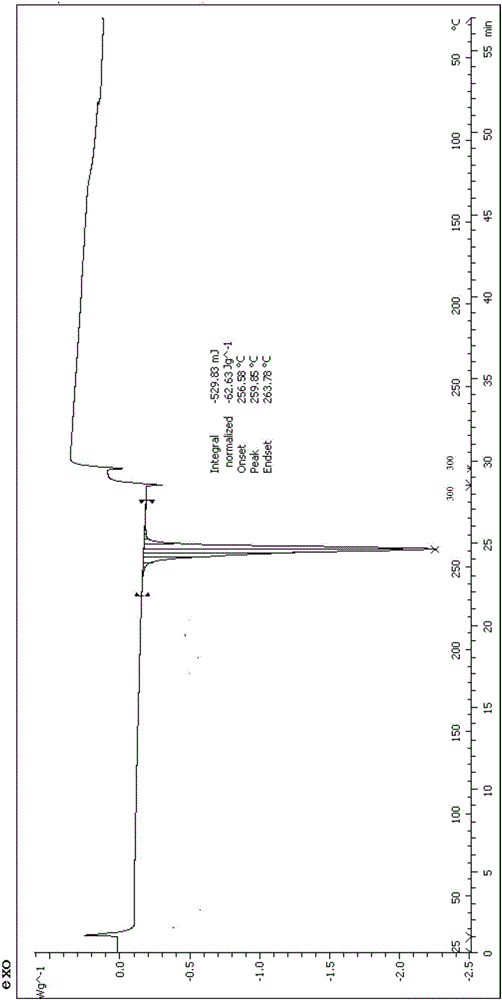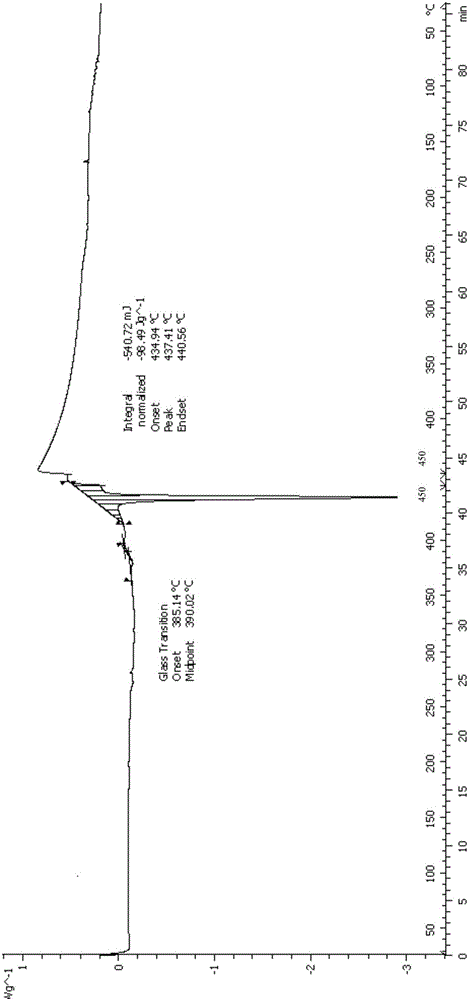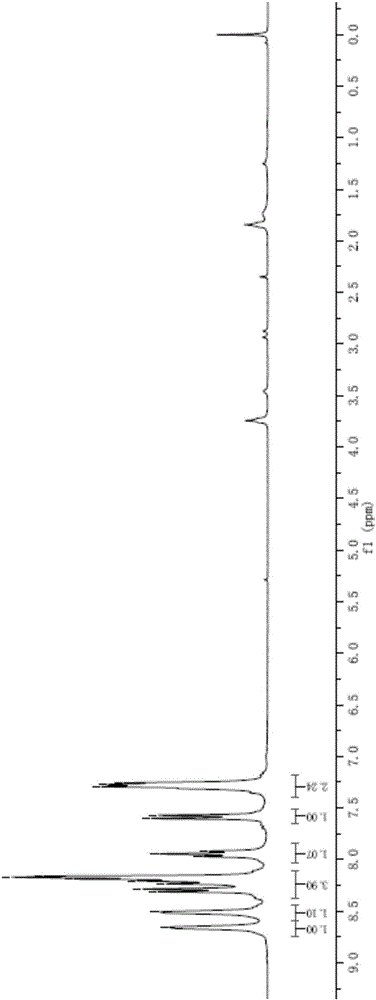Novel organic electroluminescent material and organic light emitting diode device using electroluminescent material
An electroluminescent material and light-emitting diode technology, applied in the field of OLED devices, can solve problems such as reduced luminous efficiency, and achieve the effects of promoting energy transfer, improving green light emission efficiency and service life
- Summary
- Abstract
- Description
- Claims
- Application Information
AI Technical Summary
Problems solved by technology
Method used
Image
Examples
Embodiment 1
[0037] Embodiment 1, the preparation of the first main body
[0038]
[0039] Synthesis of intermediate C:
[0040] Add 0.1mol A, 0.2mol B, 0.2mol sodium tert-butoxide, and 0.002mol palladium acetate into a 2L four-necked flask, 1L toluene into a 2L four-necked flask, stir, fill with nitrogen for 30 minutes, add 1ML tri-tert-butylphosphine, and heat Reflux for 4 hours, cool and filter to obtain the mother liquor. The mother liquor was concentrated to give a pale yellow solid. Mass Spectrum (ESI, 245.3)
[0041] Synthesis of Intermediate D (CAS: 1800071-10-6, CN104725373 Phosphorescent compound, preparation method and organic light emitting diode device):
[0042] Dissolve 0.1mol C in 300ML DMF, dissolve completely at 50°C, add 0.1mol NBS dropwise, and gradually precipitate off-white solid with the dropwise addition. The NBS was dropped, stirred overnight, cooled and filtered to obtain off-white solid D. See attached figure 1 .
[0043] Synthesis of compound 1:
[00...
Embodiment 2
[0045] Example 2: Preparation of the second body
[0046]
[0047] Synthesis of intermediate C:
[0048] Add 0.1mol A, 0.2mol B, 0.2mol sodium tert-butoxide, and 0.002mol palladium acetate into a 2L four-necked flask, 1L toluene into a 2L four-necked flask, stir, fill with nitrogen for 30 minutes, add 1ML tri-tert-butylphosphine, and heat Reflux for 4 hours, cool and filter to obtain the mother liquor. The mother liquor was concentrated to afford C as a pale yellow solid. Mass Spectrum (ESI, 245.3)
[0049]Synthesis of Intermediate D:
[0050] The synthesis of D can be synthesized by referring to the synthesis method of the literature Journal of Organic Chemistry, 76(9), 2976-2993; 2011, 9,9-diphenylacridine.
[0051] Synthesis of Intermediate F:
[0052] Dissolve 0.1mol C in 300ML DMF, dissolve completely at 50°C, add 0.1mol NBS dropwise, and gradually precipitate off-white solid with the dropwise addition. The NBS was dropped, stirred overnight, cooled and filtered ...
Embodiment 3
[0055] Embodiment 3, the third main body is synthesized
[0056]
[0057] Using 2,3-dibromopyridine as a raw material, compound G was obtained according to the synthetic route of the published patent CN102612518. Referring to the synthesis method of subject 1 and 2, subject 3 is obtained.
PUM
| Property | Measurement | Unit |
|---|---|---|
| Thickness | aaaaa | aaaaa |
| Thickness | aaaaa | aaaaa |
| Thickness | aaaaa | aaaaa |
Abstract
Description
Claims
Application Information
 Login to View More
Login to View More - R&D
- Intellectual Property
- Life Sciences
- Materials
- Tech Scout
- Unparalleled Data Quality
- Higher Quality Content
- 60% Fewer Hallucinations
Browse by: Latest US Patents, China's latest patents, Technical Efficacy Thesaurus, Application Domain, Technology Topic, Popular Technical Reports.
© 2025 PatSnap. All rights reserved.Legal|Privacy policy|Modern Slavery Act Transparency Statement|Sitemap|About US| Contact US: help@patsnap.com



